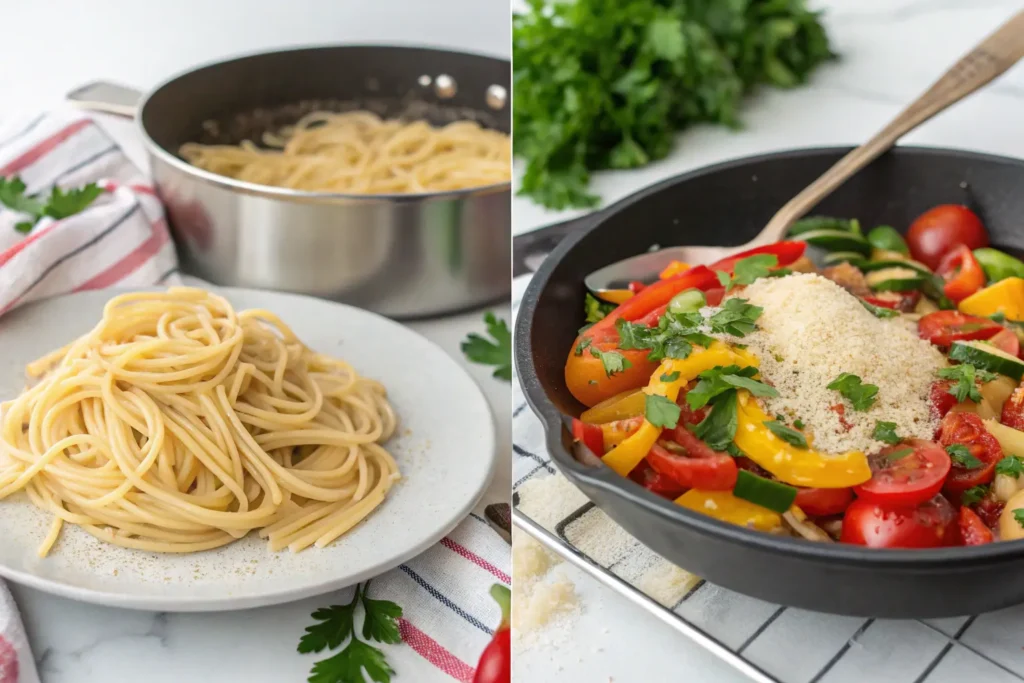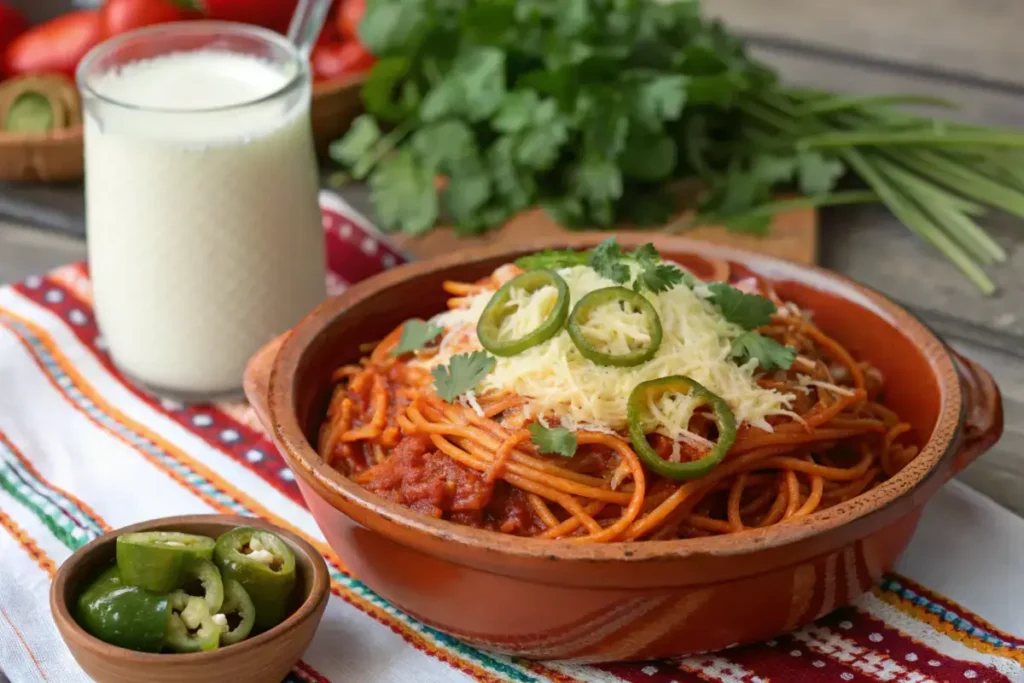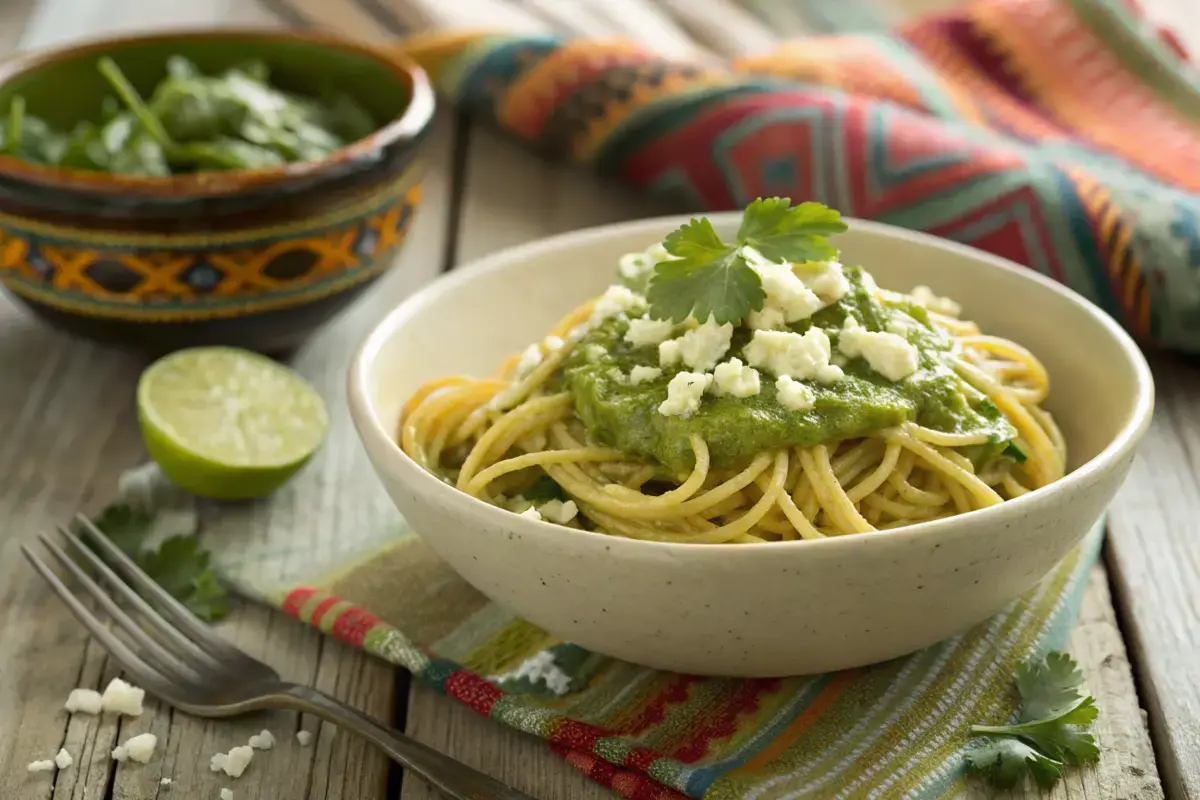Spaghetti is one of the most beloved dishes globally, but the question often arises: Is spaghetti a veg or non-veg? This query goes beyond simple ingredient lists, diving into cultural traditions, cooking methods, and dietary choices. In this article, we’ll unravel the mysteries of spaghetti’s classification by examining its origins, key ingredients, variations, and much more. Whether you’re a curious foodie or someone tailoring your diet, this guide will serve up all the insights you need.
Understanding Spaghetti: A Culinary Staple
Origins and Traditional Ingredients
Spaghetti traces its roots to Italy, a country where pasta is more than just food—it’s a cultural icon. The word spaghetti comes from the Italian word spago, meaning “thin string,” perfectly describing its long, cylindrical shape. Traditionally, spaghetti is made using just two simple ingredients: semolina flour and water. This vegetarian-friendly base forms the foundation of countless dishes worldwide.
Is spaghetti a veg or non-veg In regions like Southern Italy, semolina from durum wheat lends a firm texture and golden hue to the pasta. While this makes it vegetarian by default, regional influences often bring variations. For example, fresh pasta in Northern Italy may include eggs, altering its vegetarian classification. Over time, the world has adopted spaghetti, adapting it with diverse ingredients to suit local palates.
For those curious about the global adaptation of spaghetti, the Pasta Institute provides an excellent resource on traditional and modern variations.
Variations Across Cultures
Spaghetti has expanded far beyond its Italian origins to become a global culinary favorite. In the U.S., it often takes on a non-vegetarian twist with the addition of meatballs, while in Mexico, it transforms into a vibrant dish featuring spicy chipotle sauce or a mix of cheese and vegetables, catering to vegetarian preferences.
Asian cultures have also made spaghetti their own by incorporating stir-fried vegetables and soy-based sauces, resulting in unique fusion dishes. Whether a dish is vegetarian or non-vegetarian often depends on cultural influences and preparation styles. These global adaptations highlight spaghetti’s incredible versatility, while also adding complexity to its classification as strictly veg or non-veg.
Stay tuned for more exploration into what truly determines whether spaghetti falls into the vegetarian or non-vegetarian category!
Understanding Spaghetti: A Culinary Staple
Origins and Traditional Ingredients
Is spaghetti a veg or non-veg usally Spaghetti’s journey originates in Italy, where it began as a simple yet versatile dish. Its roots trace back to ancient times, influenced by Arab traders who brought durum wheat to Sicily. Over centuries, spaghetti became a cornerstone of Italian cuisine, celebrated for its adaptability and straightforward preparation.
Traditionally, spaghetti is made with just two vegetarian-friendly ingredients: semolina flour and water. Semolina, sourced from durum wheat, provides the pasta with its firm texture and golden hue. The dough is then shaped into the iconic long, thin strands that define spaghetti. While this basic recipe remains vegetarian, some regions in northern Italy add eggs to the dough for fresh pasta. This variation, though still vegetarian, is not suitable for vegan diets, highlighting how regional traditions shape spaghetti’s preparation and classification.
Regional traditions also influence the preparation and serving of spaghetti. For instance, Southern Italy often pairs spaghetti with tomato-based sauces, olive oil, and vegetables, making it a go-to vegetarian dish. However, in other parts of the country, meat or seafood-based sauces may be more common, introducing non-vegetarian elements into the dish. These cultural nuances shape spaghetti’s classification and its appeal worldwide. Is spaghetti a veg or non-veg
Variations Across Cultures
Spaghetti’s journey around the world highlights its remarkable adaptability to various cuisines. In the United States, spaghetti with meatballs has become a beloved staple, showcasing a non-vegetarian approach to the dish. Meanwhile, in Mexico, spaghetti takes on a spicier personality, often paired with chipotle sauce, cheese, or roasted vegetables, creating a vegetarian-friendly delight that celebrates bold flavors and creativity.
Across Asia, spaghetti has been reinvented in fusion dishes, featuring stir-fried vegetables, soy sauce, or tofu, often leaning toward vegetarian preparations. However, non-vegetarian additions like chicken or shrimp are also common in these interpretations. Similarly, American fast food culture has popularized creamy Alfredo spaghetti, frequently enriched with chicken or seafood, further blurring the line between vegetarian and non-vegetarian. These global adaptations demonstrate spaghetti’s versatility while offering diverse flavors to suit every palate.
Whether it’s a vegetarian basil pesto spaghetti in Italy or a rich seafood spaghetti in Japan, cultural variations highlight spaghetti’s versatility. Yet, they also underline why the question “Is spaghetti a veg or non-veg?” isn’t as straightforward as it seems!
Is Spaghetti Vegetarian?

Common Ingredients in Dried Spaghetti
When it comes to dried spaghetti, the good news is that it is typically vegetarian. The base ingredients—semolina flour and water—are derived entirely from plant sources. This makes dried spaghetti an excellent option for vegetarians and even vegans. Since the process of drying the pasta involves no animal products, it retains its plant-based integrity from start to finish.
Is spaghetti a veg or non-veg ? In many cases, dried spaghetti packages carry certifications, such as “vegan-friendly” or “vegetarian-approved,” offering reassurance to consumers following specific dietary practices. These labels confirm that no hidden animal-derived additives, such as egg or dairy, are used during manufacturing. Additionally, most brands steer clear of preservatives or artificial ingredients, keeping dried spaghetti simple, natural, and widely accessible.
However, it’s always wise to check the label. Some specialty pastas may include flavorings or fortifications that could compromise their vegetarian or vegan status. Overall, dried spaghetti stands as a reliably vegetarian staple that aligns with various dietary preferences.
Fresh Pasta and the Use of Eggs
Fresh spaghetti, on the other hand, tells a slightly different story. Unlike dried pasta, which relies solely on water and flour, fresh spaghetti frequently incorporates eggs. Eggs add richness, elasticity, and a softer texture to the pasta, making it a favorite for chefs crafting delicate dishes. While this addition keeps the pasta vegetarian, it excludes it from being considered vegan.
The inclusion of eggs raises questions about ethical sourcing. For those following a vegetarian lifestyle with environmental or ethical concerns, seeking out pasture-raised or ethically produced eggs is a thoughtful approach. These options ensure that the eggs are sourced responsibly, aligning better with the principles of sustainable eating.
While eggs push fresh spaghetti outside the realm of vegan options, they do not compromise its vegetarian classification. It’s a matter of understanding your dietary boundaries and selecting the pasta type that works best for your needs. Whether dried or fresh, spaghetti offers choices for nearly every table!
Non-Vegetarian Aspects of Spaghetti Dishes
Meat-Based Sauces and Additions
Spaghetti often takes a non-vegetarian turn with the addition of meat-based sauces and toppings. One of the most popular examples is Bolognese sauce, a rich and hearty blend of ground meat (typically beef or pork), tomatoes, onions, and aromatic herbs. This classic pairing transforms spaghetti into a filling and protein-packed dish loved worldwide.
Beyond sauces, toppings like meatballs or slices of ham also make their way into spaghetti dishes. Meatballs, often seasoned with garlic, parsley, and breadcrumbs, are a staple in American-Italian cuisine. While these toppings make the dish undeniably non-vegetarian, they offer endless customization for meat lovers.
Though bacon is another common addition, many cultures swap it out for more locally preferred meats, like sausage or turkey. Each addition reinforces the dish’s non-vegetarian classification, but also its appeal to a broader audience that enjoys bold, savory flavors.
Seafood Variations
For seafood enthusiasts, spaghetti provides a perfect canvas for ocean-inspired creations. Dishes like spaghetti alle vongole (clam spaghetti) or shrimp linguine are popular in coastal regions, blending the flavors of the sea with the texture of pasta. These recipes often feature light, olive oil-based sauces infused with garlic, chili, or white wine (non-alcoholic substitutions are also possible).
Seafood, while lighter than red meat, solidifies spaghetti’s non-vegetarian status due to its animal origins. Other variations, such as spaghetti with squid ink or smoked salmon, are equally sought after for their unique tastes. Seafood-based spaghetti dishes cater to pescatarians but remain outside the vegetarian umbrella.
The inclusion of meat or seafood undeniably shifts spaghetti away from its vegetarian base, showcasing its versatility but challenging its plant-based identity. Whether you’re a meat lover or a seafood aficionado, these additions bring a depth of flavor that highlights spaghetti’s global popularity.
Vegetarian and Vegan Spaghetti Options

Plant-Based Sauces and Toppings
For those seeking vegetarian or vegan options, spaghetti remains a versatile and satisfying dish. Plant-based sauces are abundant and widely available, making it easy to enjoy spaghetti without compromising dietary preferences. Classics like marinara sauce, a simple blend of tomatoes, garlic, olive oil, and herbs, are naturally vegetarian and vegan. Similarly, arrabbiata sauce, with its spicy kick, and pesto, made from basil, garlic, nuts, and olive oil, offer flavorful alternatives that are entirely plant-based.
In recent years, the inclusion of plant-based meats has revolutionized spaghetti recipes. Options like meat-free meatballs, soy crumbles, or jackfruit-based substitutes mimic the texture and flavor of traditional toppings without using animal products. These innovations make it easy to transform traditional spaghetti dishes into vegan-friendly versions without sacrificing taste or protein content.
Egg-Free Pasta Alternatives
For those adhering to a vegan lifestyle, traditional fresh pasta made with eggs can be a hurdle. Thankfully, many brands now offer vegan spaghetti crafted without eggs or other animal-derived ingredients. Popular choices include pasta made from lentils, chickpeas, or rice flour, providing options for those with additional dietary needs like gluten intolerance.
Homemade egg-free spaghetti is another excellent option for those who enjoy cooking. By using a simple dough of semolina flour and water, you can create fresh pasta at home that meets vegan standards. To add variety, ingredients such as spinach or beetroot can enhance the dough, creating spaghetti with vibrant colors and distinct flavors.
Whether store-bought or homemade, these vegetarian and vegan spaghetti options demonstrate that plant-based eating doesn’t mean sacrificing enjoyment or creativity. With the right sauces and pasta choices, spaghetti can easily adapt to any diet, offering a delicious and inclusive meal for all.
Cultural Perspectives on Spaghetti
Italian Cuisine
Spaghetti holds a revered place in Italian cuisine, symbolizing both tradition and simplicity.Spaghetti serves as a cornerstone of the Italian diet, celebrated for its versatility and its role in uniting people around a shared meal. Originating in Italy, spaghetti is often at the heart of family gatherings, festive occasions, and even casual weeknight dinners.
Spaghetti in Italy reflects regional preferences, which play a significant role in determining whether the dish leans vegetarian or non-vegetarian. Southern Italy emphasizes light, plant-based sauces like marinara or aglio e olio, which are naturally vegetarian. These dishes showcase fresh tomatoes, garlic, olive oil, and herbs—staples of the Mediterranean diet.
In contrast, northern Italy often uses fresh pasta that includes eggs and combines spaghetti with richer sauces such as ragu or carbonara. These variations frequently introduce non-vegetarian elements like meat, pancetta, or cream, which alter the dish’s classification.
Italian culture consistently highlights the use of fresh, high-quality ingredients, ensuring that spaghetti shines in all its forms. Whether prepared as vegetarian, vegan, or non-vegetarian, spaghetti continues to demonstrate its adaptability and timeless appeal in Italian cuisine.
Frequently Asked Questions (FAQs)
What is Green Spaghetti Made Of?
Green spaghetti is a vibrant twist on traditional pasta, gaining its color and flavor from green ingredients like spinach, herbs, or pesto sauce. The base for green spaghetti can vary, Learn More
What Does Green Pasta Taste Like?
The taste of green pasta depends on the ingredients used in its preparation. Herb-based green spaghetti, such as those made with pesto, offers a bold, earthy flavor with hints of garlic and nuts. Learn More
What is Mexican Spaghetti Made Of?
Mexican spaghetti is a flavorful fusion dish that combines the essence of Mexican spices with the familiarity of pasta. Its sauce is often tomato-based and infused with ingredients like chili powder, cumin, and garlic Learn More
Conclusion
Is spaghetti a veg or non-veg ? Spaghetti, a culinary favorite worldwide, transcends borders and dietary preferences, offering something for everyone. Whether it’s the vegetarian-friendly simplicity of dried spaghetti, the richness of egg-based fresh pasta, or the robust flavors of meat and seafood additions, spaghetti’s versatility is undeniable. We’ve explored how cultural traditions, ingredients, and preparation methods influence its classification as veg or non-veg. From plant-based sauces to non-vegetarian toppings, the choice is ultimately yours.
As you enjoy spaghetti in its many forms, it’s essential to check ingredient labels or ask about preparation methods, especially if you follow specific dietary guidelines. With so many vegetarian, vegan, and non-vegetarian options available, spaghetti remains a dish that can be customized to suit every lifestyle. So, get creative, explore new recipes, and let spaghetti bring joy to your table!

